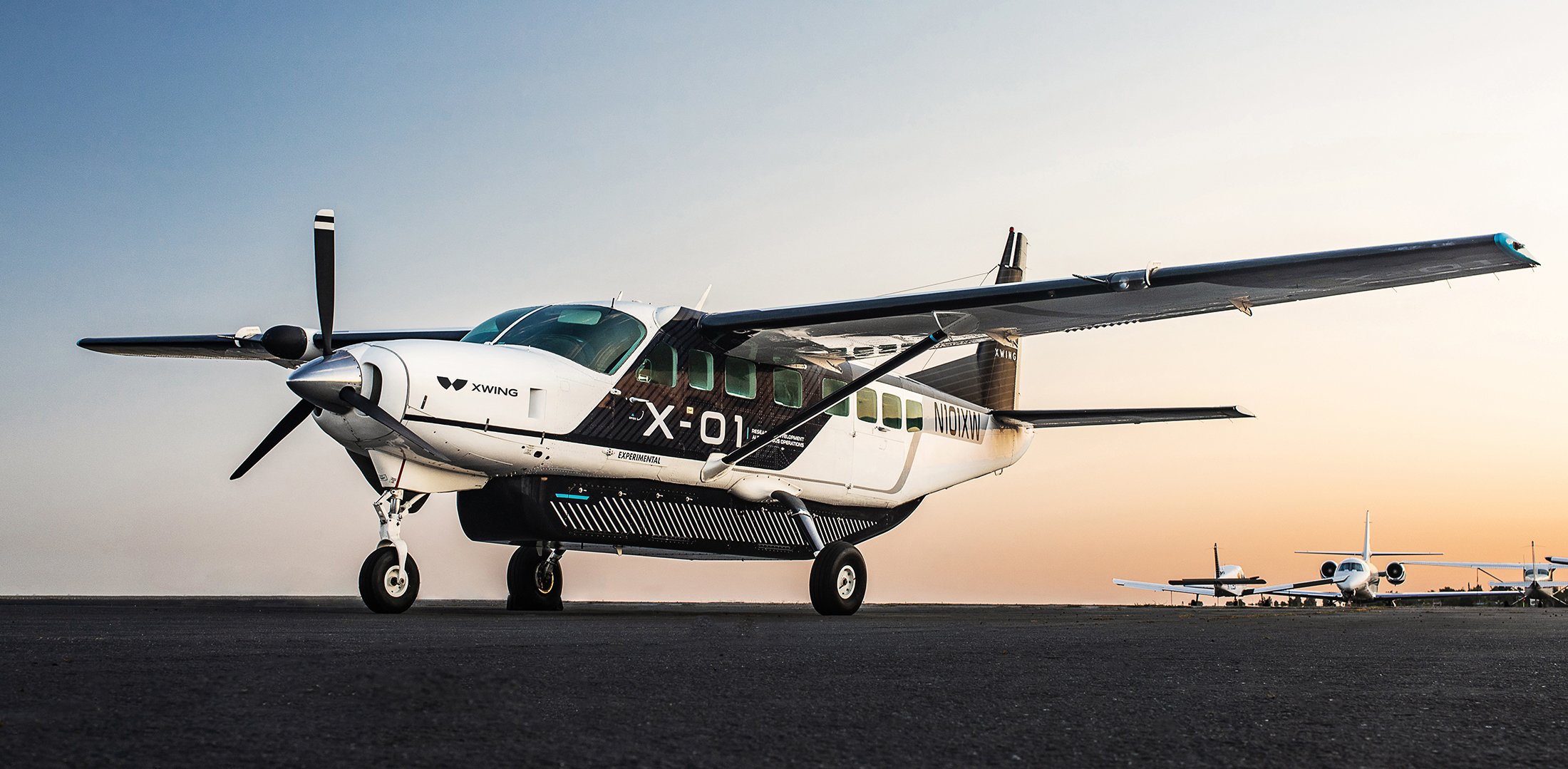Click Here to View This Page on Production Frontend
Click Here to Export Node Content
Click Here to View Printer-Friendly Version (Raw Backend)
Note: front-end display has links to styled print versions.
Content Node ID: 419972
Autonomous aviation pioneer Xwing says it has formally begun the FAA approval process for its “Superpilot” autonomous flight control system, which the company plans to use for pilotless cargo delivery flights in the U.S.
Xwing says it recently filed its project-specific certification plan with the FAA, making the company’s self-piloting Cessna cargo airplane the first standard-category large uncrewed aircraft system (UAS) to receive official project designation from the agency.
Because the Superpilot is integrated into an existing, type-certified aircraft—a Cessna 208B Grand Caravan—Xwing is able to seek certification as a standard-category airplane. Until now, all aviation projects focusing on autonomy, such as drones and military aircraft, have had special-category airworthiness certificates.
“We're going to be in the National Airspace System, operating like any other aircraft at the same airports doing the same things that we did yesterday,” Earl Lawrence, Xwing’s chief compliance and quality officer, told FutureFlight. “We're a cargo operation. We meet all those air carrier standards, and we're going to continue to do that. But now we're saying the aircraft, meeting all of the normal category standards, will be automated and will be on those same routes that we had pilots on before.”
To prepare for eventual pilotless flights, Xwing has been operating a Part 135 air carrier service since 2021 and making about 400 weekly cargo delivery flights for UPS using a fleet of unmodified Cessna Caravans. Xwing has been using data from those piloted flights to help develop and refine the Superpilot, which uses artificial intelligence and machine-learning technologies to guide decision-making processes. “We’re going to comply with the existing standard-category rules, but this will be the first application showing compliance for a machine-learned set of software,” Lawrence said.
Xwing’s Superpilot uses a combination of software and hardware to control the aircraft while providing complete situational awareness during gate-to-gate operations. The aircraft is equipped with dozens of sensors, as well as cameras, radar, and LIDAR systems mounted under the wing. The Superpilot combines data from those sensors with real-time airspace, airport, weather, and terrain map data to create a comprehensive view of its environment. Flights are monitored from the ground by an operator who can input manual controls if necessary.
While Xwing is focused on cargo operations for now, the company is designing its Superpilot to meet the FAA’s airworthiness safety requirements for passenger aircraft, which have the most stringent safety rules. That’s because the Cessna 208B Grand Caravan, which typically seats up to nine passengers, is already certified to those standards.
“We’re not limiting ourselves to cargo,” Lawrence said. “We're not trying to lower that standard…We are going to meet the level for which this aircraft was certified when it left the Cessna Aircraft Corporation because we don't want to reduce it. Our goal is to meet the requirements of the aircraft as they were certified.”
Now that the project-specific certification plans have been filed, Xwing will work closely with the FAA to finalize a G-1 issue paper, or certification basis, which spells out all the rules and regulations that apply to Xwing’s Superpilot certification project. Lawrence said it could take about three years before the FAA grants Xwing the supplemental type certificate (STC) it needs to begin commercial cargo operations without pilots on board.
Eventually, Xwing hopes its Superpilot will also be used for commercial passenger flights on larger airliners, although Lawrence admits that passenger acceptance of pilotless airplanes is a long way off. Single-pilot operations with highly automated pilot assistance technologies will be more feasible in the foreseeable future.
Another long-term goal for Xwing is to reduce or eliminate the emissions produced by its cargo fleet. However, the company isn’t in the business of developing powertrains. “If there was an STC available right now to be able to convert the fleet in a cost-effective way, we would be converting the fleet right now,” Xwing CEO Marc Piette told FutureFlight.
A handful of companies are in the process of developing electric, hybrid, and hydrogen fuel cell powertrains for Cessna Grand Caravans, such as ZeroAvia, Ampaire, MagniX, and Surf Air Mobility. Meanwhile, Piette said Xwing’s Superpilot technology is vehicle-agnostic and could be applied to any type of airplane, “whether it’s a turboprop, hybrid-electric aircraft, fully electric aircraft, or hydrogen fuel cell aircraft.” So, while Xwing could benefit from making its fleet of Caravans greener, manufacturers of other aircraft could also potentially incorporate Xwing’s Superpilot to make their own operations safer and more efficient. “These two technology stocks are really complementary, and they add to each other’s value,” Piette said.
